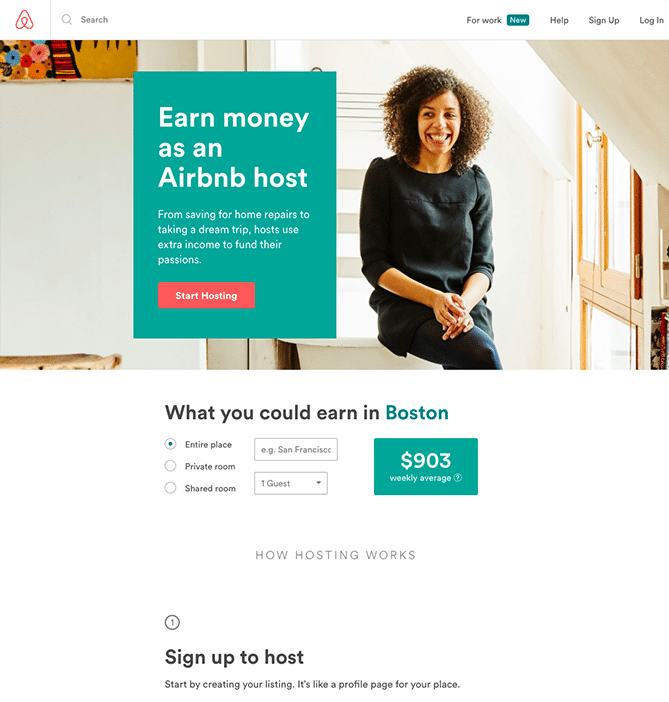As a savvy digital marketer, you likely spend hours planning how you can increase your lead generation strategy. More social posts? A new email journey? You may even be over-spending your budget on PPC ads hoping for a conversion.
The main goal of any marketing campaign is to drive action. After a lead clicks your CTA, are they taken to your company’s “contact us” form or a dedicated landing page?
If you haven’t considered creating landing pages for your email campaigns, you’re missing out on a huge lead generating opportunity. Landing pages are a critical element for a successful inbound marketing strategy and have an average conversion rate of 2.35%, with certain industries reaching over 10%.
Ready to boost your bottom line and earn new customers? Read on to discover how you can increase the conversion rate from email to landing pages.
Why are emails and landing pages a winning combination?
While captivating content and dynamic imagery are essential to increase email open and click-through rates, you need a final hook for your subscribers to convert into customers. Without a landing page, your email marketing campaigns won’t be as successful, and you run the risk of losing a new customer.
Why? Landing pages complement your emails by providing a final destination and message for your readers to learn more. Your landing page showcases additional features of your offering and provides a CTA for the user to move further into your customer journey.
Not only are landing pages effective for your current subscriber list, but they also help earn new subscribers. You can use the landing page across multiple digital channels to help build your email audience and generate new leads.
Tips to increase conversion rate from email to landing page
Simply adding a landing page to your email marketing campaign won’t be enough to improve your conversion rate or earn new leads. For a higher success rate, consider some of these methods.
1. Understand your audience’s needs.
While this may be self-explanatory, it’s easy to rush your landing page and end up with a haphazard strategy. Instead of jumping in, you need first to ask yourself a few questions:
- Who’s going to be clicking from your email to the landing page?
- Who’s your ideal customer?
- What’ll they feel when looking at the page?
- What’ll drive them to fill out a form?
Once you have these questions answered, you need to focus your entire campaign around the responses. Customers demand personalization and want to feel a connection with the brands they communicate with. By creating landing pages targeted towards specific buyer personas, you’re more likely to appeal to your audience’s needs and earn a conversion.
For example, if you’re targeting a younger generation, try including a video on your landing page. Short-form videos are highly digestible content and a fun way to display your value, while quickly capturing your lead’s attention. Videos on landing pages increase conversions by 86%.
2. Highlight the value proposition and deliver.
In both your email and landing page copy, you need to showcase your value proposition.
While it’s easy to get into a groove of duplicating landing pages with a new offer, it’s essential to dig deeper and explore why your audience would believe your offer is worth their information.
Your email teases the value, and the landing page needs to act as the gateway. Providing anything from a checklist, free trial, or ebook, the landing page isn’t just click-bait—it’s a solution to your subscriber’s problem.
Additionally, don’t beat around the bush about why people should care about you. Once you’ve hooked a subscriber from your email to landing page, immediately describe how your product or service will benefit their lives.
Source: Airbnb
3. Create captivating headlines that elicit emotion.
Emails and landing pages have one major thing in common: the need to create successful headlines. In fact, 90% of users who read the headline are more likely to read the CTA copy as well. Your headlines are the first impression that the subscriber has of your brand, and thus needs to be attention-grabbing and quickly sum up your value proposition.
When developing your headlines, make sure the message remains consistent between the email and landing page copy, so your audience isn’t confused by the transition. You’ll also want to trigger an emotion—anger, exclusivity, achievement, etc.—because the majority of people tend to make their decisions based on their emotions, rather than data.
Source: Teambit
4. Keep the form short and sweet.
How many times have you been turned off by a long or confusing form? Think of it this way: If a user feels like they’re giving up more information than the value they’re receiving, they won’t convert.
While many forms have between five and 11 fields, the optimal number is three. Consider what information you need to build an engaging retargeting email campaign afterward:
- First name: need
- Email address: need
- Last name: want
- Phone: want
- Occupation: want
- Location: want
- Interests: want
The great thing about aligning a landing page with your email is that you may already have the “want” information captured, so you can always go back and connect the dots.
Source: Trulia
5. Add trust signals.
If you’re looking to build credibility with your subscribers, consider adding testimonials from satisfied customers.
People trust people. Using trust signals within your email and landing pages shows the lead that you’re reliable to reassure their decision to convert. Considering that 88% of people will read reviews before submitting information, testimonials are a great way to build social proof.
Your trust signal doesn’t have to come from reviews. You can also utilize powerful statistics or numbers to showcase how your products are being used. Numbers help establish your authority in the industry and create a bandwagon effect.

Source: TransferWise
Create an email and landing page campaign in four steps.
Feeling inspired by the tips to increase conversion rates from email to landing page? It’s time to put practice into action and develop your lead generation strategy. Before you start, take a look at this step-by-step guide to creating an effective email and landing page campaign:
Step one: Develop a matching message.
As part of a customer journey, the email and landing page need to have similar messaging. Determine a consistent tone, value proposition, and purpose.
Think of the email as the teaser content, while the landing page expands more on the benefits you’re offering. For example, if your email teases out free returns, the headline on the landing page should reflect that offer.
Step two: Design a cohesive look.
Similar to messaging, the email and landing page need to have a cohesive design, so it’s clear the two platforms are aligned. The streamlined approach makes it easier for the subscriber to feel connected to your brand and follow through with the conversion.
Keep in mind that you don’t need to overdesign your elements to be successful. In fact, it’s recommended to ditch common web elements, such as a navigation bar on your landing page, to eliminate extra distractions. For your design, use similar:
- Theme for stock photos
- Color palette
- Fonts
Step three: Focus on one CTA.
Your CTA is one of the most critical elements of your email and landing page design. After all, without one, you’re unable to capture any leads. While it may be tempting to include a CTA about your initial offer and your newest blog, focus your attention on a primary call to action. If a user has too many options to click, they’ll become distracted and will most likely not take action at all.
When designing your CTA, consider the following elements:
- Size: A larger button will quickly draw the subscriber’s eye when compared to inline, linked text.
- Color: The color should be different than the background and copy to create contrast.
- Whitespace: There should be enough space between the body copy and button so it’s free of distraction.
Step four: Test and monitor.
Testing is a crucial aspect of understanding your campaign’s performance and discovering where you need to improve. It’s recommended to A/B test your email and landing pages to see what resonates with your audience more.
You can test the CTA, headline, imagery, and more by sending two audience segments different versions of your email or landing page. For example, If you see a higher click-through rate on a particular subject line but a decreased conversion rate, you can analyze why your CTA isn’t hooking the subscriber.
Wrap up
With a compelling email and landing page campaign, you’re more likely to engage your subscribers and boost your bottom line. While these two elements go hand in hand, you need to pay attention to each channel’s performance to understand how the campaign is performing overall.
If you’re looking to increase conversion rates from email to landing page, consider the following:
- Set goals and understand your audience’s motivators.
- Make sure your offer is valuable to your subscribers.
- Write compelling copy and design that’s consistent across both platforms.
- Don’t distract your subscribers with a lengthy form.
- Add testimonials and trust signals to boost social proof.
Ready to send better email campaigns that convert? Start your free trial of Campaign Monitor today.








